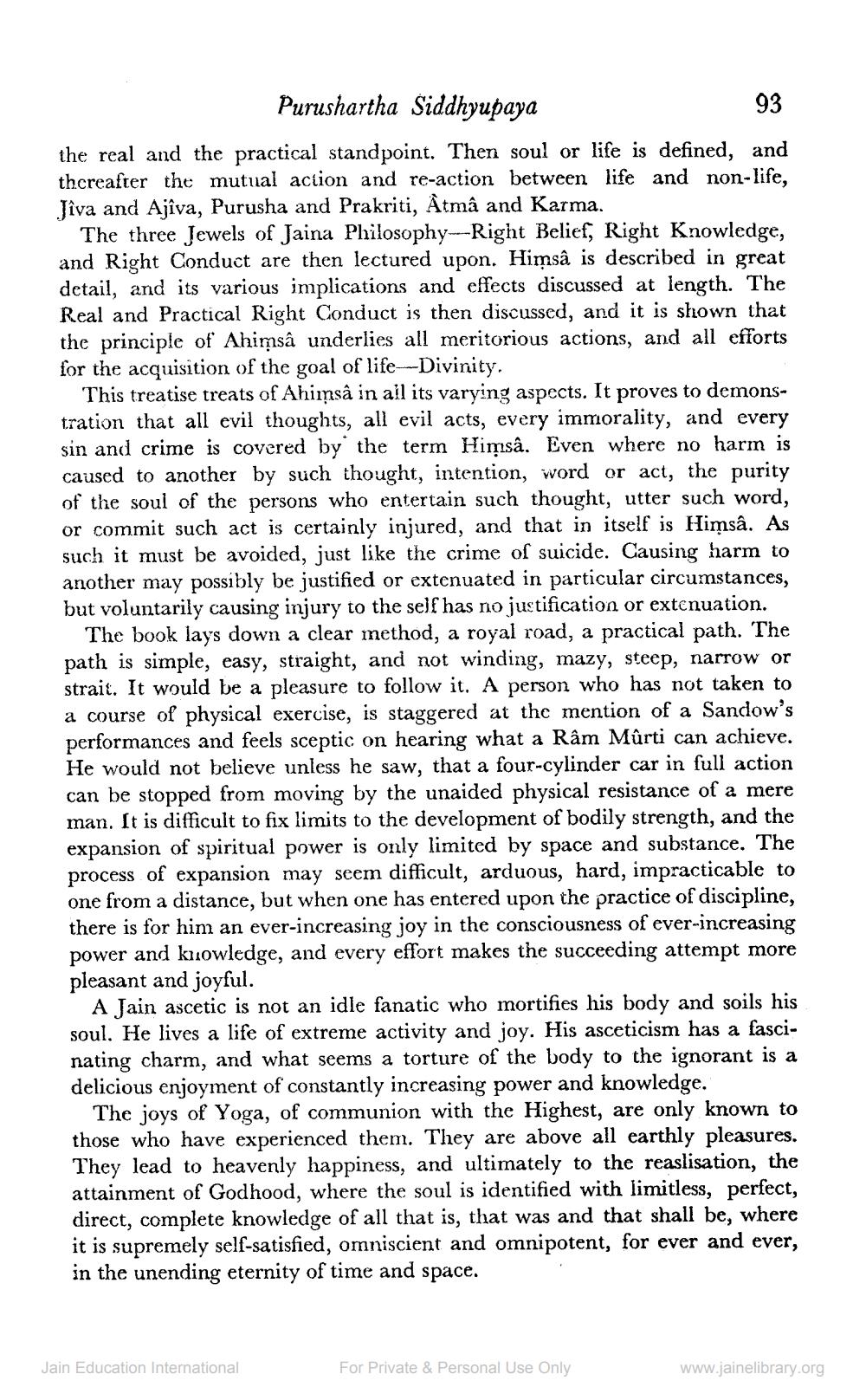________________
Purushartha Siddhyupaya
93
the real and the practical standpoint. Then soul or life is defined, and thereafter the mutual action and re-action between life and non-life, Jiva and Ajiva, Purusha and Prakriti, Atmâ and Karma.
The three Jewels of Jaina Philosophy-Right Belief, Right Knowledge, and Right Conduct are then lectured upon. Himsâ is described in great detail, and its various implications and effects discussed at length. The Real and Practical Right Conduct is then discussed, and it is shown that the principle of Ahimsâ underlies all meritorious actions, and all efforts for the acquisition of the goal of life-Divinity.
This treatise treats of Ahimsâ in all its varying aspects. It proves to demonstration that all evil thoughts, all evil acts, every immorality, and every sin and crime is covered by the term Himsâ. Even where no harm is caused to another by such thought, intention, word or act, the purity of the soul of the persons who entertain such thought, utter such word, or commit such act is certainly injured, and that in itself is Himsâ. As such it must be avoided, just like the crime of suicide. Causing harm to another may possibly be justified or extenuated in particular circumstances, but voluntarily causing injury to the self has no justification or extenuation.
The book lays down a clear method, a royal road, a practical path. The path is simple, easy, straight, and not winding, mazy, steep, narrow or strait. It would be a pleasure to follow it. A person who has not taken to a course of physical exercise, is staggered at the mention of a Sandow's performances and feels sceptic on hearing what a Râm Mûrti can achieve. He would not believe unless he saw, that a four-cylinder car in full action can be stopped from moving by the unaided physical resistance of a mere man. It is difficult to fix limits to the development of bodily strength, and the expansion of spiritual power is only limited by space and substance. The process of expansion may seem difficult, arduous, hard, impracticable to one from a distance, but when one has entered upon the practice of discipline, there is for him an ever-increasing joy in the consciousness of ever-increasing power and knowledge, and every effort makes the succeeding attempt more pleasant and joyful.
A Jain ascetic is not an idle fanatic who mortifies his body and soils his soul. He lives a life of extreme activity and joy. His asceticism has a fascinating charm, and what seems a torture of the body to the ignorant is a delicious enjoyment of constantly increasing power and knowledge.
The joys of Yoga, of communion with the Highest, are only known to those who have experienced them. They are above all earthly pleasures. They lead to heavenly happiness, and ultimately to the reaslisation, the attainment of Godhood, where the soul is identified with limitless, perfect, direct, complete knowledge of all that is, that was and that shall be, where it is supremely self-satisfied, omniscient and omnipotent, for ever and ever, in the unending eternity of time and space.
Jain Education International
For Private & Personal Use Only
www.jainelibrary.org




